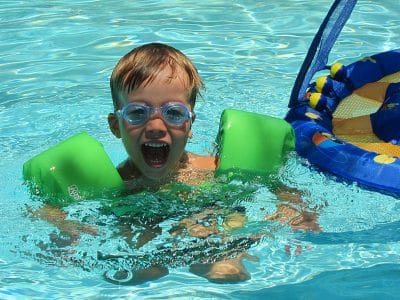Utah Pool Drowning Statistics
Our drowning accident attorney in Utah has gathered the following statistics from government studies and drowning-prevention research organizations. Links to the source websites can be accessed through the link at the head of each section. CDC – Unintentional Drowning:
- Males: Nearly 80% of people who die from drowning are male.
- Children: Children ages 1 to 4 have the highest drowning rates. In 2009, among children 1 to 4 years old who died from an unintentional injury, more than 30% died from drowning. Among children ages 1 to 4, most drownings occur in home swimming pools.
- Gated Pools: A four-sided isolation fence (separating the pool area from the house and yard) reduces a child’s risk of drowning 83% compared to three-sided property-line fencing.
- Drowning Fatalities: From 2005-2009, there was an annual average of 3,533 fatal unintentional drownings (non-boating related) annually in the United States (about ten deaths per day).
- Boating Fatalities: From 2005-2009, an average of 347 people died each year from drowning in boating-related incidents.
- Near-Drowning Injuries: More than 50% of drowning victims treated in emergency departments require hospitalization or transfer for further care.
- Alcohol: Among adolescents and adults, alcohol use is involved in up to 70% of deaths associated with water recreation.
 CDC – Stay Safe In and Around Swimming Pools:
CDC – Stay Safe In and Around Swimming Pools:
- Near-Drowning Injuries: For every child less than 15 years old who dies from drowning in a pool, another 10 receive emergency room care for nonfatal submersion injuries.
- Ethnicities at Risk: Black Americans between the ages of 5 and 19 are six times as likely to drown in pools as their Whites and Hispanic counterparts. (Access to swimming pools and lessons, in combination with sociocultural factors, may contribute to ethnic differences in fatal drowning rates.)
- Regional Risk: Rates of swimming pool drowning deaths in the United States is higher in the South and the West than in the Northeast and Midwest. Rates of swimming pool drowning deaths are highest in Florida, Arizona, Nevada, and Mississippi.
- Urban: Those in large urban areas are at a higher risk of fatal drowning than those who live elsewhere.
- Swimming Lessons: Participation in formal swimming lessons can reduce the risk of drowning by as much as 88% among young children aged 1 to 4 years.
National Safety Council – Pool Safety:
- Brain Damage: Irreversible brain damage can occur within 4-6 minutes of oxygen deprivation.
- Consciousness: A child can lose consciousness within 2 minutes.
- Threat of Drowning: The threat of drowning can exist in as little as 1 inch of water.
SNICC – Facts About Swimming Pool Drowning Accidents:
- Children: Drowning is the second leading cause of injury-related death among children under the age of 15.
- Private Pools: More than 80% of the drownings occur in residential pools or spas.
- Near-Drown Injuries: Up to 20% of children age 15 and under who are hospitalized from a near-drowning event suffer severe and permanent disabilities.
- Divorce: More than 90% of parents who lose a child to drowning end up divorcing.
- Costs: Healthcare costs for each near drowning event range from $75,000 for emergency room services to $180,000 per year for long-term care.
- Cause of Death: Drowning is the 4th leading cause of accidental death in the United States
To read more about pool drowning accidents, click here.
Image “Lucas in the pool” copyright by Lars Plougmann.
Table of Contents
Free Consultation
Learn your Rights. Get Answers. Free.